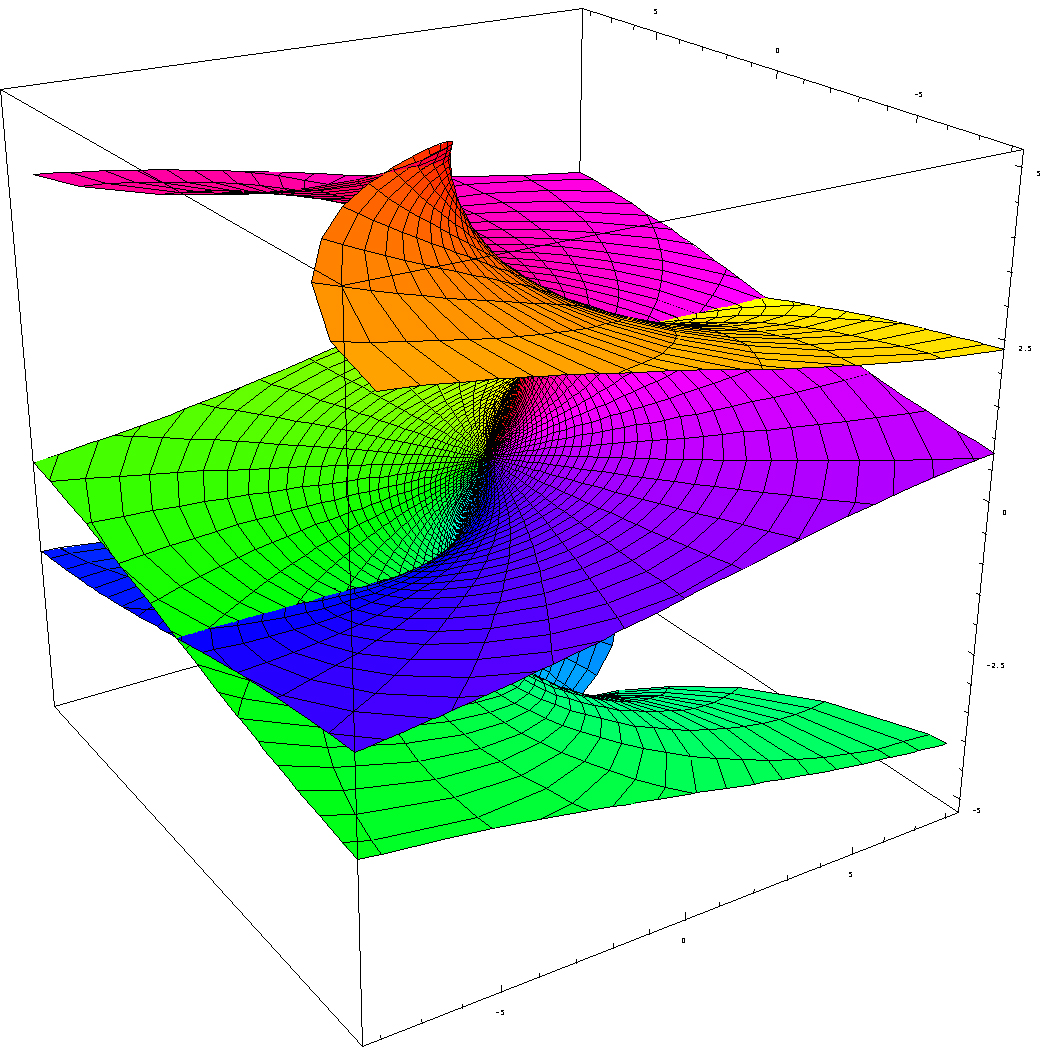An Introduction to Algebraic Curves

Nesin Mathematics Village
10-16 August 2020
**********POSTPONED**********
Textbook:
We will cover the fundamental ideas of the above textbook.
The main goal is to show that every compact complex Riemann surface can be embedded into a projective space. This is remarkable since a Riemann surface is initially an object of study of complex geometry, whereas when it is embedded into a projective space it becomes an object of algebraic geometry. Thus the two worlds coincide in the example of Riemann surfaces, mostly due to the analytic and algebraic nature of the complex numbers.
Prerequisites:
A nodding acquaintance with complex numbers, functions and vector spaces may be helpful. However a certain degree of curiosity and eagerness to learn and an altruistic quest for knowledge, though not officially required, will be extremely useful in extracting a joy of discovery from the course material.
Level:
Advanced undergraduate
Abstract:
We will introduce the concept of compact complex curves, otherwise known as compact Riemann surfaces, as opposed to the more friendly and easily understood concept of algebraic curves who live happily in projective spaces. We will see immediately that every smooth complex algebraic curve is a compact Riemann surface but the converse is one of the biggest and earliest achievements of algebraic geometry. It is the famous Riemann-Roch theorem which shows how to embed a compact Riemann surface into a projective space as a smooth algebraic curve. We will describe, and illustrate with ample examples, all these terms as they appear in the course. Besides the Riemann-Roch theorem we will have a chance to meet Bezout's theorem, Riemann-Hurwitz formula, degree-genus formula, Abel-Jacobi theorem and even a taste of the Torelli theorem which has extensions to K3 surfaces (which we may study some other year).
Language:
English (mostly!)
Syllabus:
The tentative distribution of the topics to the days of the week will be as follows

Phillip A. Griffiths, Introduction to Algebraic Curves,
Translations of Mathematical Monographs, 76.
American Mathematical Society, Providence, RI, 1989. x+221 pp.
ISBN: 0-8218-4530-6
We will cover the fundamental ideas of the above textbook.
The main goal is to show that every compact complex Riemann surface can be embedded into a projective space. This is remarkable since a Riemann surface is initially an object of study of complex geometry, whereas when it is embedded into a projective space it becomes an object of algebraic geometry. Thus the two worlds coincide in the example of Riemann surfaces, mostly due to the analytic and algebraic nature of the complex numbers.
Prerequisites:
A nodding acquaintance with complex numbers, functions and vector spaces may be helpful. However a certain degree of curiosity and eagerness to learn and an altruistic quest for knowledge, though not officially required, will be extremely useful in extracting a joy of discovery from the course material.
Level:
Advanced undergraduate
Abstract:
We will introduce the concept of compact complex curves, otherwise known as compact Riemann surfaces, as opposed to the more friendly and easily understood concept of algebraic curves who live happily in projective spaces. We will see immediately that every smooth complex algebraic curve is a compact Riemann surface but the converse is one of the biggest and earliest achievements of algebraic geometry. It is the famous Riemann-Roch theorem which shows how to embed a compact Riemann surface into a projective space as a smooth algebraic curve. We will describe, and illustrate with ample examples, all these terms as they appear in the course. Besides the Riemann-Roch theorem we will have a chance to meet Bezout's theorem, Riemann-Hurwitz formula, degree-genus formula, Abel-Jacobi theorem and even a taste of the Torelli theorem which has extensions to K3 surfaces (which we may study some other year).
Language:
English (mostly!)
Syllabus:
The tentative distribution of the topics to the days of the week will be as follows
| Monday |
Riemann surfaces, genus, Euler
characteristic, meromorphic functions, multiplicity of a
function at a point, ramification index, differentials,
Stokes' theorem, residues of differentials,
Poincare-Hopf formula |
| Tuesday |
Projective space, algebraic varieties,
divisors, degree, tangent spaces, holomorphic maps from
Riemann surfaces to projective spaces |
| Wednesday |
Local structure of algebraic curves,
intersection numbers, Bezout's theorem, Riemann-Hurwitz
theorem, the degree-genus formula |
| Thursday |
Day off |
| Friday |
The Riemann-Roch theorem, applications to
g=0 and g=1 cases, canonical mapHyperelliptic and
non-hyperelliptic curves, g=2, g=3 and g=4 cases |
| Saturday |
Hyperelliptic and non-hyperelliptic curves, g=2, g=3 and g=4 cases |
| Sunday |
Abel's theorem, Jacobi inversion, Torelli
theorem, J-invariant and the biholomorphic
classification of elliptic curves |
For registration go to Nesin Mathematics Village registration
page.